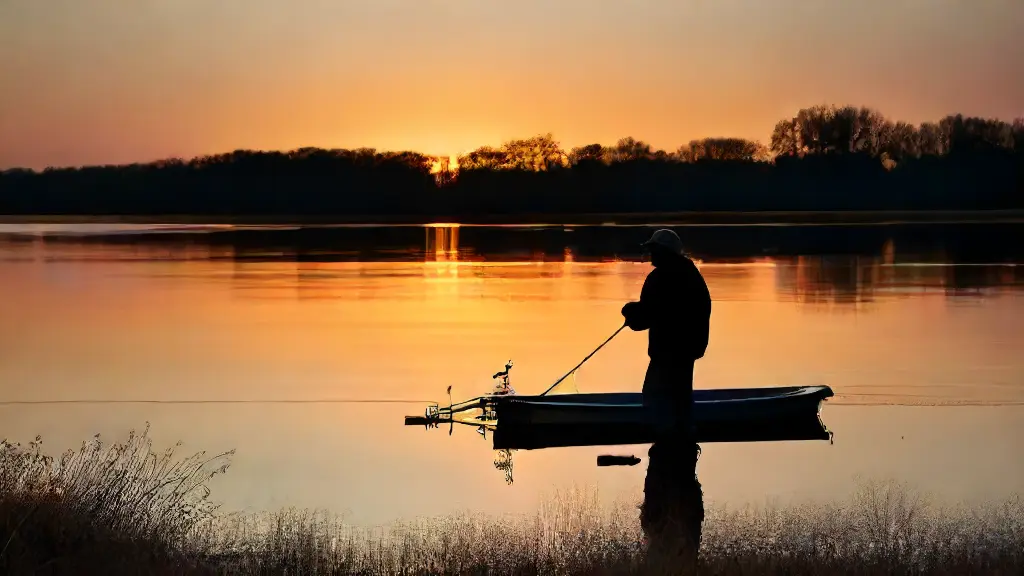How to Choose the Right Rod Power for Bank Fishing

The thrill of bank fishing is all about connecting with nature and reeling in the big catch. To experience the ultimate fishing adventure, it’s essential to start with the right gear, beginning with selecting the perfect rod power.
As an angler, you know that the right rod power can make all the difference between a memorable catch and a frustrating experience.
Rod power selection is a delicate balance between tackle, line, and reel, and understanding its relation to these components can boost your fishing experience.
For instance, light rods are ideal for smaller species and gentle waters, while heavy rods handle larger fish and deeper waters. To make the right choice, consider the species you’re targeting, as different species exhibit unique behaviors that require specific rod powers. One key consideration is the overall combination of these factors in determining a successful fishing experience.
What is Rod Power
When the sun dips into the horizon, painting the sky with warm hues, and the gentle lapping of water against the shore creates a soothing melody, there’s a sense of tranquility that washes over anglers as they prepare to cast their lines.
Choosing the right rod power is crucial for a successful bank fishing experience.
If the rod power is too strong, it can overpower the lightweight lines and lead to a tangled mess, leading to a loss of valuable fishing time.
On the other hand, a rod power that is too weak may struggle to set the hook effectively, resulting in missed bites and lost opportunities.
Rod power measurements are usually indicated by numbers or descriptive terms like medium-light, medium-heavy, or heavy. These measurements refer to the rod’s ability to absorb and transmit the energy of the fish’s fight, ultimately dictating reel selection and line choice.

Species Behavior
The art of fishing is as much about understanding the subtleties of nature as it is about mastering the art of rod handling. By tuning in to the intricate behaviors of aquatic creatures, anglers can develop a sixth sense for detecting even the most elusive bites.
When embarking on a new fishing adventure, it’s crucial to familiarize yourself with the water conditions and habitats that your target species call home.
By doing so, you’ll increase your chances of encountering the perfect catch.
Identifying a species is not just about visual recognition – it’s also about understanding the senses and instincts that drive their behavior.
Fish have evolved remarkable adaptations to avoid detection, from the way they move through the water to the way they perceive their surroundings. The right fishing gear and techniques can make all the difference by considering rod sensitivity, fishing style, water conditions, species identification, and proper use of fishing gear, and handling the rod with care.
| Fishing Techniques | Understanding Nature | Fishing Gear | Species Identification |
|---|---|---|---|
| Tuning in to aquatic creature behaviors | Mastering the art of rod handling | Rod sensitivity, fishing style, water conditions | Visual recognition, senses, and instincts |
| Familiarizing yourself with water conditions and habitats | Developing a sixth sense for detecting bites | Proper use of fishing gear, handling the rod with care | Understanding the senses and instincts that drive fish behavior |
| Considering water conditions, species identification, and fishing style | Mastering the art of fishing | Rod sensitivity, water conditions, species identification | Evolved adaptations to avoid detection |
Can I Use Same Rod Power
Fishing is a delicate dance between technique, tackle, and the ever-changing waters. When embarking on a new fishing adventure, one crucial aspect to consider is the right rod power, which significantly influences casting accuracy and overall success.
Rod flexibility and species habitat play a significant role in casting accuracy.
A rod with the right flexibility can help anglers achieve longer casts and more precise control.
Conversely, a rod that’s too rigid can result in line memory and a lack of power transfer.
In addition to rod flexibility, factors such as line weight, reel size, and reel maintenance also affect rod power performance.
For instance, using the wrong line weight can compromise the rod’s flexibility, while a well-maintained reel ensures smooth line retrieval and optimal casting dynamics. Fishing location and fishing regulations also impact rod power, which is critical to consider when selecting the right rod and reel for a successful fishing trip.
Fishing Strategy
The thrill of reeling in a big catch lies in the anticipation and skill that goes into it.
To start, choosing the right gear is crucial. Understanding line weight and action is vital as it affects the overall performance of your rod.
A rod with the right action can make a significant difference in your fishing experience, allowing you to set hooks more effectively.
Form follows function, and a rod that is too heavy can be difficult to manage, while one that is too light may not provide the desired sensitivity.
Meanwhile, the thickness of the line also plays a significant role, as thicker lines are better suited for species of larger size.
Water temperature and species size play a crucial role in determining the right rod weight and line thickness for a successful catch. A successful fishing experience is influenced by a combination of fishing experience, fishing techniques, rod recovery, water temperature, rod weight, and species size.
How to Choose Rod Power for Trout Fishing
As you embark on a trout fishing adventure, the key to success lies in understanding the intricate dynamics between rod power and the-water habitat. The thrill of reeling in a trophy trout is exhilarating, but it’s crucial to consider the nuances of the sport to avoid a disappointing experience.
Trout behavior and habitat are crucial factors to consider when choosing rod power.
For instance, fast-moving waters require a more agile rod that can handle the swift currents, while stillwaters demand a rod with a bit more backbone to handle the subtle bites.
Understanding Trout Behavior and Habitat
- Trout behavior and habitat types (fast-moving vs. stillwater)
- Influence of weather conditions on trout activity
II. Ultimately, the right rod power for your fishing style is a combination of your fishing duration, fishing frequency, fishing attitude, fishing patience, rod grip, and rod length.
How to Choose Rod Power for Bass Fishing
As anglers, we’re always looking for ways to gain a competitive edge on the water. Understanding the nuances of rod power can be the difference between a successful day and a frustrating one.
Fishing manufacturers classify rods by their power, which is determined by the rod construction, materials, blank thickness, and guide system.
They range from ultralight to heavy, offering a variety of options for anglers.
When choosing a rod power, consider your fishing style and goals. If you’re a finesse fisherman, a light to medium action rod with a sensitive tip may be the perfect choice.
On the other hand, if you’re a power fisherman, a medium to heavy action rod with a strong backbone can help you tackle larger bass. Species distribution and the type of water you’re fishing also play a significant role in selecting the right fishing equipment.
Fishing Environment
As the sun rises over the serene waters, many anglers embark on a quest to reel in the perfect catch, savoring the thrill of the hunt amidst the gentle lapping of the waves. Fishing environment plays a vital role in ensuring a successful and enjoyable experience.
Finding Your Sweet Spot
Before you start fishing, it’s essential to understand the bank.
This involves identifying the water depth and clarity, observing fish behavior and movement, and noticing vegetation and structure.
Choosing the Right Tools
When planning your fishing trip, consider the fishing targets you’re after and select the right rod to match the species, fishing seasons, and conditions you’ll encounter. your presentation is clear, concise, and visually appealing, making it easy for your audience to understand and appreciate the information provided.
What is Fishing Gear
As anglers meticulously record their fishing records, they begin to unravel the intricate patterns of their prized catches. Throughout history, fishing has been a revered pastime, with fishermen meticulously chronicling their fishing manuals to better understand the habits of their catches.
At its core, fishing gear is a delicate balance of components working together in harmony.
When it comes to catching the big ones, it’s essential to understand the basics of each key component: rods, reels, lines, and lures.
For beginners, matching gear to fishing style and target species is crucial for a successful catch. This means considering budget, durability, and versatility – and, of course, for those who are just starting out, seeking guidance from fishing forums and tutorials can be a valuable resource.
Facts About Fishing
- Fishing has been a revered pastime throughout history.
- Fishermen meticulously chronicling their fishing manuals to better understand the habits of their catches.
- For beginners, matching gear to fishing style and target species is crucial for a successful catch.
- Fishing gear is a delicate balance of components working together in harmony.
Best Reels for Bank Fishing with Live Bait
Best Rods for Bank Fishing in Lakes


